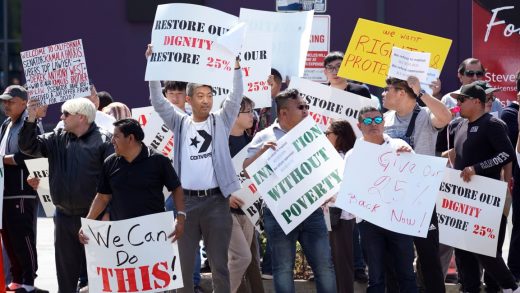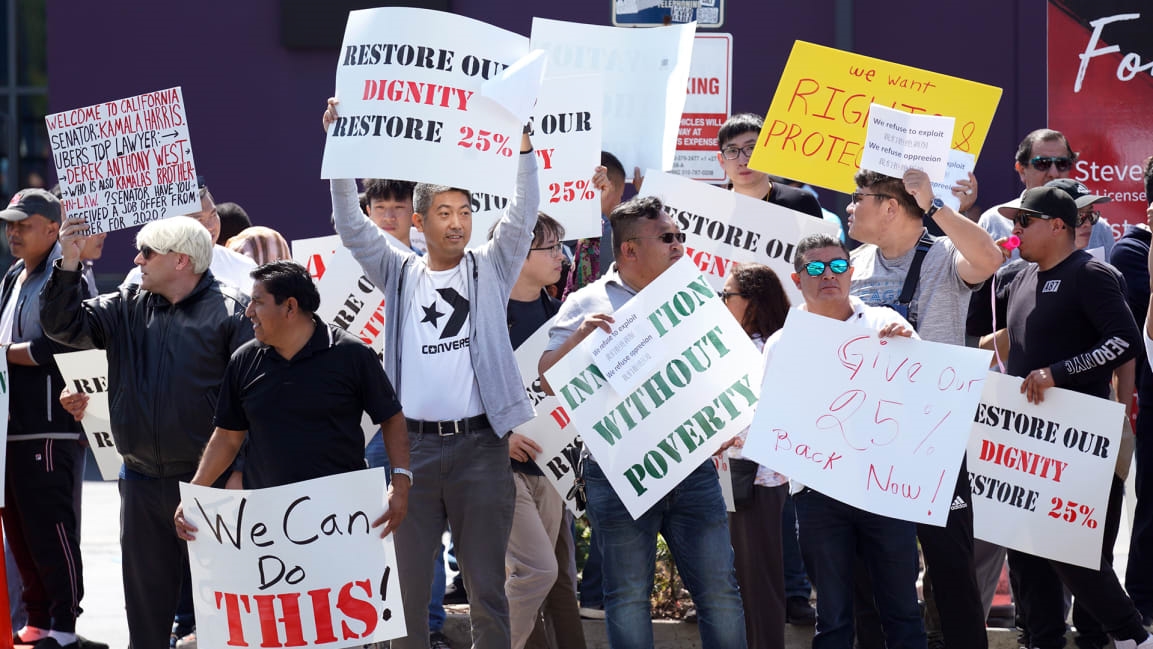Lyft drivers go on strike for higher pay; Lyft answers with free debit cards
This week, Uber and Lyft drivers acted on an issue that’s been bubbling to the surface of the ride-sharing industry for years: low driver pay. As both companies prepare to IPO, thousands of drivers in Los Angeles, San Diego, and San Francisco logged off the apps for 25 hours on March 25 to protest low pay and a lack of transparency around how pay decisions are made.
The specific precipitating incident for the strike was Uber reportedly slashing drivers’ per-mile pay in Los Angeles County by 25% last week. But concerns about low driver pay have plagued ride-hailing companies like Uber and Lyft for years. According to a study last year that focused specifically on New York City, researchers found that drivers were more likely than ever to consider ferrying passengers for Uber and Lyft their full-time job, yet one-fifth of those drivers rely on food stamps, and more than 40% qualified for Medicaid. After an organizing push by drivers and advocates, New York introduced a rule last year that would mandate a minimum wage for app-based drivers (Lyft initiated a lawsuit against the city over it). Through the strikes this week, drivers in California are demanding they make a minimum of $28 per hour in order to make a living in some of the most expensive regions of the country.
On the morning after the protest began, Lyft took what could be interpreted as a carrot approach to appeasing its striking labor force. The company introduced a new economic initiative, Lyft Driver Services, that encompasses a variety of programs intended to “help drivers succeed on their own terms,” according to Eric Smith, a communications officer for Lyft.
Under Lyft Driver Services, all Lyft drivers will get access to a no-fee bank account and debit card, which Lyft rolled out in partnership with the Oklahoma-based Stride Bank. The company will also be rolling out Lyft Service Centers, where drivers can access discounted servicing on their vehicles, and scaling up its Express Drive program, which enables drivers to rent vehicles from Hertz at a discount. At this time, Lyft is not disclosing how much money they are investing in the entire Driver Services initiative.
According to Smith, the announcement of Lyft Driver Services has been in the works for a while, and was timed for March 26 before it became evident that drivers would strike on March 25.
While the banking aspect is new, the Service Centers and Express Drive are more a matter of “updating and scaling up existing programs,” Smith says. Last year, for instance, Lyft announced a $100 million investment in building a network of driver hubs, which would serve both as driver meetup spaces and discounted vehicle maintenance centers. Since last year, 15 hubs were opened, but none offered the promised maintenance and vehicle services. Under this new announcement, Lyft is pledging to make good on that promise. And through more investment in the existing Express Drive initiative, Lyft says it wants to raise the number of electric vehicles available through the program as both a sustainability tactic and a way to help drivers cut down on fuel costs.
In rolling out the Driver Services suite, Lyft is trying to incentivize drivers to choose to drive only for their platform. And comprehensive programs such as this also will likely draw the attention of investors in advance of the company’s IPO.
But on the issue of driver pay, Lyft is seemingly not budging. In a statement to Fast Company, a spokesperson for the company said: “Lyft . . . has led the industry in initiatives like in-app tipping, same-day payments, access to affordable rental vehicles, and more. We are always open to conversations around how we can make Lyft better for drivers, but what we hear from the majority is that this is a flexible option that works for them.”
At least for the drivers who went on strike on March 25, they’re still hoping for higher pay. After all, what good is a free debit card if you don’t have enough income to fund it?
(24)



